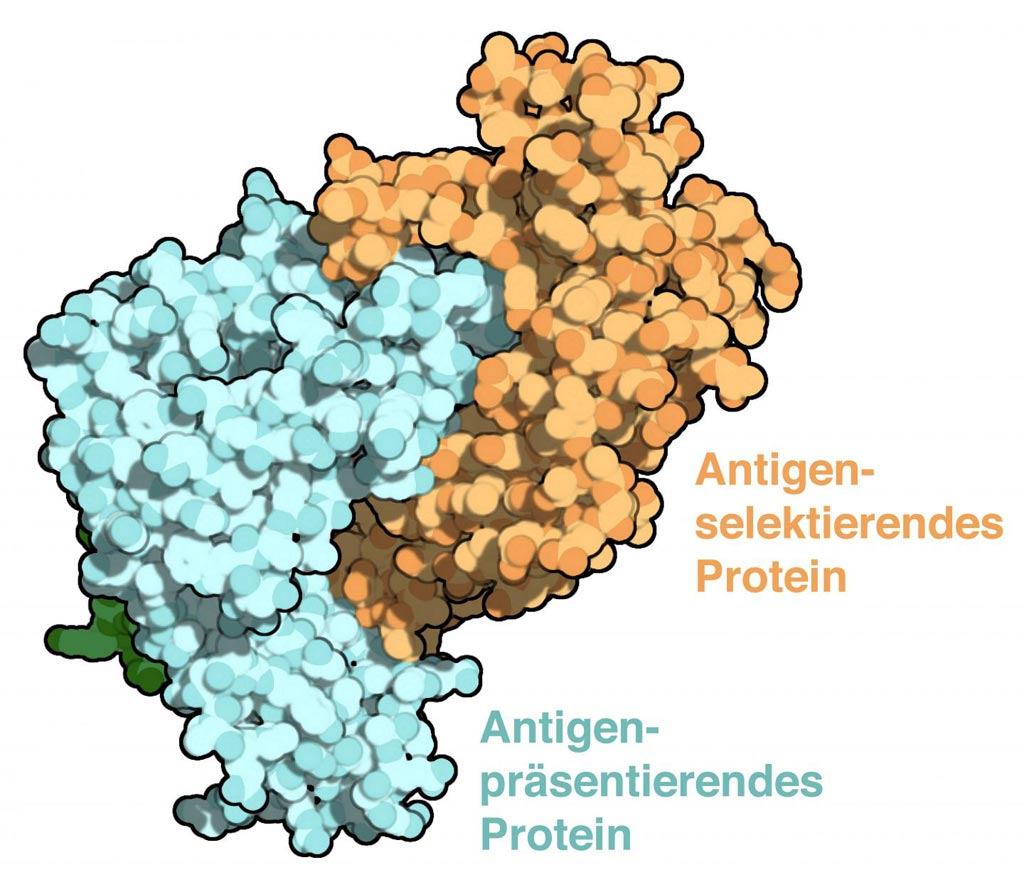X-ray Crystallography Explains Immune System Response
By LabMedica International staff writers
Posted on 24 Oct 2017
A team of German researchers used X-ray crystallography explain a critical step in the immune system's response to foreign proteins by establishing the structure of the critical TAPBPR–MHC I complex.Posted on 24 Oct 2017
The chaperones Tapasin (Tsn) and TAP-binding protein-related (TAPBPR) facilitate MHC I peptide loading and high-affinity epitope selection. Despite the pivotal role of Tsn and TAPBPR in controlling the hierarchical immune response, their catalytic mechanism remains unknown.

Image: A model of the solved protein complex responsible for the selection of antigens (Photo courtesy of AG Tampé).
The TAPBP gene encodes a transmembrane glycoprotein that mediates interaction between newly assembled major histocompatibility complex (MHC) class I molecules and the transporter associated with antigen processing (TAP), which is required for the transport of antigenic peptides across the endoplasmic reticulum membrane.
Tapasin is a MHC class I antigen-processing molecule present in the lumen of the endoplasmic reticulum. It plays an important role in the maturation of MHC class I molecules in the ER lumen. Tapasin is one component of the peptide-loading complex, and can be found associated with MHC class I molecules after the MHC class I heavy chain has associated with Beta2 microglobulin. The peptide-loading complex consists of TAP, tapasin, MHC class I, calreticulin, and ERp57. Tapasin recruits MHC class I molecules to the TAP peptide transporter, and also enhances loading of MHC class I with high-affinity peptides.
Investigators at Goethe University (Frankfurt, Germany) presented the X-ray structure of the TAPBPR–MHC I complex in the October 12, 2017, online edition of the journal Science. They reported that TAPBPR functioned as peptide selector by remodeling the MHC I alpha2-1-helix region, stabilizing the empty binding groove, and inserting a loop into the groove that interfered with peptide binding.
"Our work solves a 30 years old problem of cellular immunity, in particular how antigens associated with tumors or pathogens are selected through processes of editing and quality control in order to generate a specific immune response" said senior author Dr. Robert Tampé, professor of biochemistry at Goethe University.
Related Links:
Goethe University














